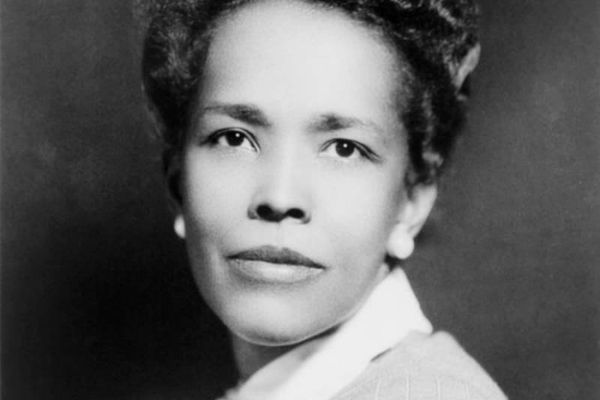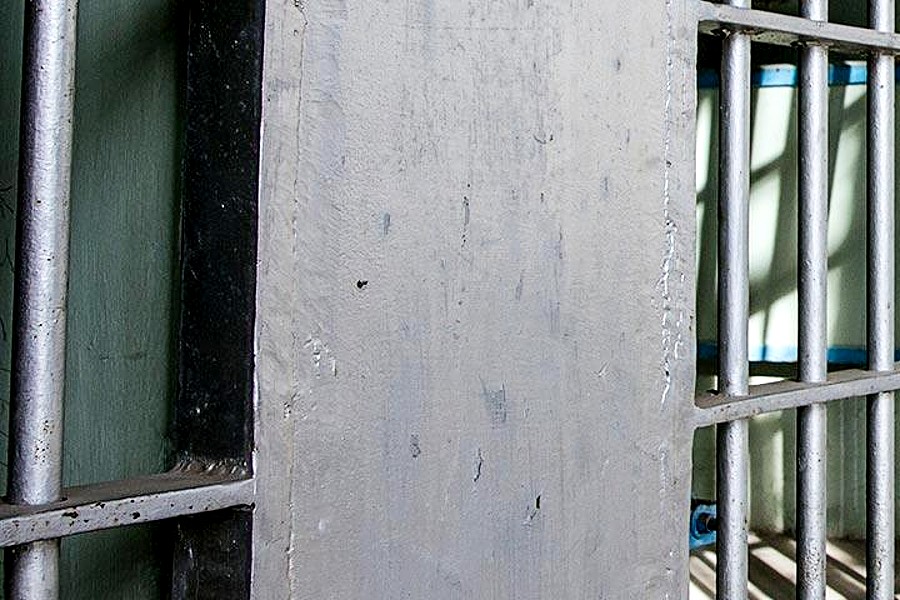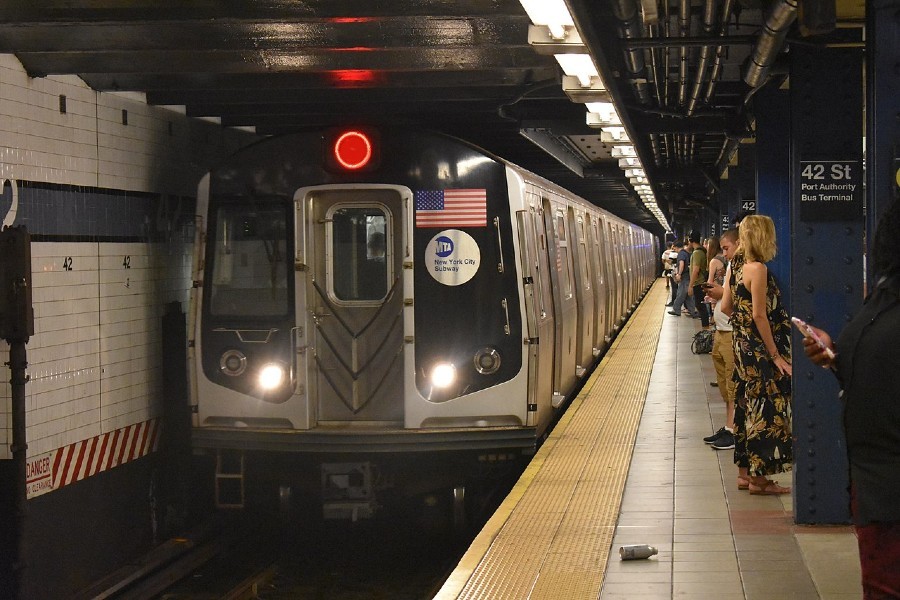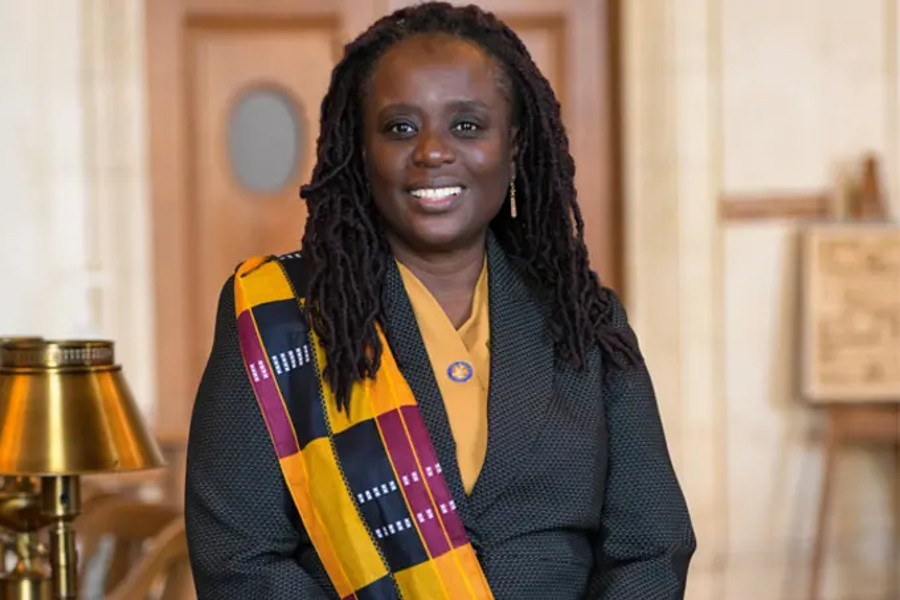 Ella Josephine Baker, December 13, 1903 – December 13, 1986, was an African-American civil right and human rights activist. She was a largely behind-the-scenes organizer whose career spanned more than five decades. In Harlem, New York and the South, she worked alongside some of the most noted civil rights leaders of the 20th century, including W. E. B. Du Bois, Thurgood Marshall, A. Philip Randolph, and Martin Luther King Jr. She also mentored many emerging activists, such as Diane Nash, Stokely Carmichael, Rosa Parks, and Bob Moses, whom she first mentored as leaders in the Student Nonviolent Coordinating Committee (SNCC).
Ella Josephine Baker, December 13, 1903 – December 13, 1986, was an African-American civil right and human rights activist. She was a largely behind-the-scenes organizer whose career spanned more than five decades. In Harlem, New York and the South, she worked alongside some of the most noted civil rights leaders of the 20th century, including W. E. B. Du Bois, Thurgood Marshall, A. Philip Randolph, and Martin Luther King Jr. She also mentored many emerging activists, such as Diane Nash, Stokely Carmichael, Rosa Parks, and Bob Moses, whom she first mentored as leaders in the Student Nonviolent Coordinating Committee (SNCC).
Baker criticized professionalized, charismatic leadership; she promoted grassroots organizing, radical democracy, and the ability of the oppressed to understand their worlds and advocate for themselves. She realized this vision most fully in the 1960s as the primary advisor and strategist of the SNCC. She has been ranked as “One of the most important African American leaders of the twentieth century and perhaps the most influential woman in the civil rights movement.” She is known for her critiques not only of racism within American culture, but also of sexism within the civil rights movement.
Early life and education
Baker was born in 1903 in Norfolk, Virginia to Georgiana (called Anna) and Blake Baker and first raised there. She was the middle of three surviving children, bracketed by her older brother Blake Curtis and younger sister Maggie. Her father worked on a steamship line that sailed out of Norfolk and was frequently away. Her mother took in boarders to earn extra money. In 1910 Norfolk had a race riot in which whites attacked black workers from the shipyard. Her mother decided to take the family back to North Carolina while their father continued to work for the steamship company. Ella was seven when they returned to her mother’s rural hometown near Littleton, North Carolina.
As a girl, Baker lived in a woman-centered world of maternal relatives. Her grandfather Mitchell had died, and her father’s parents lived a day’s ride away. She often listened to her grandmother, Josephine Elizabeth “Bet” Ross, tell stories about slavery leaving the South to escape its oppressive society. At an early age, Baker gained a sense of social injustice, as she listened to her grandmother’s horror stories of life as a slave. Her grandmother, beaten and whipped, for refusing to marry another slave, who she wasn’t in love with, told Ella of life as an African American woman during this period. Giving her granddaughter context to the African American experience helped Ella understand the injustices black people still faced.
New York City
Baker worked as an editorial assistant at the Negro National News. In 1930 George Schuyler, a black journalist and anarchist (and later an arch-conservative), founded the Young Negroes Cooperative League (YNCL). It sought to develop black economic power through collective networks. They conducted “conferences and training in the 1930s in their attempt to create a small, interlocking system of cooperative economic societies throughout the US” for black economic development. Having befriended Schuyler, Baker joined his group in 1931 and soon became its national director.
She also worked for the Worker’s Education Project of the Works Progress Administration, established under President Franklin D. Roosevelt’s New Deal. Baker taught courses in consumer education, labor history, and African history. She immersed herself in the cultural and political milieu of Harlem in the 1930s. She protested Italy’s invasion of Ethiopia and supported the campaign to free the Scottsboro defendants in Alabama, a group of young black men accused of raping two white women. She also founded the Negro History Club at the Harlem Library and regularly attended lectures and meetings at the YWCA.
During this time, Baker lived with and married her college sweetheart, T. J. (Bob) Roberts. They divorced in 1958. Ella Baker rarely discussed her private life or marital status. According to fellow activist, Bernice Johnson Reagon, many women within the Civil Rights Movement followed Baker’s example, adopting a practice of dissemblance about their private lives that allowed them to be accepted as individuals within the movement.
Baker befriended John Henrik Clarke, a future scholar and activist; Pauli Murray, a future writer and civil rights lawyer, and others who would become lifelong friends. The Harlem Renaissance influenced Baker in her thoughts and teachings. She advocated widespread, local action as a means of social change. Her emphasis on a grassroots approach to the struggle for equal rights influenced the growth and success of the modern civil rights movement of the mid-20th century.
NAACP (1938–1953)
In 1938 Baker began her long association with the National Association for the Advancement of Colored People (NAACP), which was then based in New York City. In December 1940 she started work there as a secretary. She traveled widely for the organization, especially in the South, recruiting members, raising money, and organizing local chapters. She was named director of branches in 1943, and became the highest-ranking woman in the NAACP. An outspoken woman, Baker believed in egalitarian ideals. She pushed the NAACP to decentralize its leadership structure and to aid its membership in more activist campaigns at the local level.
Baker believed that the strength of an organization grew from the bottom up and not the top down. She believed that the work of the branches was the NAACP’s lifeblood. Baker despised elitism and placed her confidence in many. She believed that the bedrock of any social change organization is not the eloquence or credentials of its top leaders, but in the commitment and hard work of the rank and file membership and the willingness and ability of those members to engage in a process of discussion, debate, and decision making. She especially stressed the importance of young people and women in the organization.
While traveling throughout the South on behalf of the NAACP, Baker met hundreds of black people, establishing lasting relationships with them. She slept in their homes, ate at their tables, spoke in their churches, and earned their trust. She wrote thank-you notes and expressed her gratitude to the people she met. This personalized approach to political work was one important aspect of Baker’s effective effort to recruit more members, both men and women, into the NAACP. Baker formed a network of people in the South who would be important in the continued fight for civil rights. Whereas some northern organizers tended to talk down to rural southerners, Baker’s ability to treat everyone with respect helped her in recruiting. Baker fought to make the NAACP more democratic. She tried to find a balance between voicing her concerns and maintaining a unified front.
Between 1944 and 1946, Baker directed revolutionary leadership conferences in several major cities, such as Chicago and Atlanta. She got top officials to deliver lectures, offer welcoming remarks, and conduct workshops.
In 1946, Baker took in her niece Jackie, whose mother was unable to care for her. Due to her new responsibilities, Baker left her full-time position with the NAACP and began to serve as a volunteer. She soon joined the New York branch of the NAACP to work on local school desegregation and police brutality issues. She became its president in 1952. In this role, she supervised the field secretaries and coordinated the national office’s work with local groups. Baker’s top priority was to lessen the organization’s bureaucracy and give more power to women within the organization; this included reducing Walter Francis White’s dominating role as executive secretary.
She did not believe that the program should be primarily channeled through White, the executive secretary, and the national office, but rather through the people out in the field. She lobbied to reduce the rigid hierarchy, place more power in the hands of capable local leaders, and give greater responsibility and autonomy to local branches. In 1953 she resigned from the presidency to run for the New York City Council on the Liberal Party ticket, but she was unsuccessful.
Southern Christian Leadership Conference (1957–1960)
In January 1957, Baker went to Atlanta to attend a conference aimed at developing a new regional organization to build on the success of the Montgomery Bus Boycott in Alabama. After a second conference in February, the Southern Christian Leadership Conference (SCLC) was formed. This was initially planned as a loosely structured coalition of church-based leaders who were engaged in civil rights struggles across the South. The group wanted to emphasize the use of nonviolent actions to bring about social progress and racial justice for southern blacks. They intended to rely on the existing black churches, at the heart of their communities, as a base of its support. Its strength would be built on the political activities of local church affiliates. The SCLC leaders envisioned themselves as the political arm of the black church.
The SCLC first appeared publicly as an organization at the 1957 Prayer Pilgrimage for Freedom. Baker was one of three major organizers of this large-scale event. She demonstrated her ability to straddle organizational lines, ignoring and minimizing rivalries and battles. The conference’s first project was the 1958 Crusade for Citizenship, a voter registration campaign to increase the number of registered African-American voters for the 1958 and 1960 elections. Baker was hired as Associate Director, the first staff person for the SCLC. Reverend John Tilley became the first Executive Director. Baker worked closely with southern civil rights activists in Georgia, Alabama, and Mississippi, and gained respect for her organizing abilities. She helped initiate voter registration campaigns and identify other local grievances. Their strategy included education, sermons in churches, and efforts to establish grassroots centers to stress the importance of the vote. They also planned to rely on the Civil Rights Act of 1957 to protect local voters. While the project did not achieve its immediate goals, it laid the groundwork for strengthening local activist centers to build a mass movement for the vote across the South. After John Tilley resigned as director of the SCLC, Baker lived and worked in Atlanta for two and a half years as interim executive director until Reverend Wyatt Tee Walker started in the role in April 1960.
Baker’s job with the SCLC was more frustrating than fruitful. She was unsettled politically, physically, and emotionally. She had no solid allies in the office. Historian Thomas F. Jackson notes that Baker criticized the organization for “programmatic sluggishness and King’s distance from the people. King was a better orator than democratic crusader [she] concluded.”
“Participatory democracy”
In the 1960s, the idea of “participatory democracy” became popular among political activists, including those involved in the Civil Rights Movement. It combined the traditional appeal of democracy with an innovative tie to broader grassroots participation.
There were three primary emphases to this new movement:
An appeal for grass roots involvement of people throughout society, while making their own decisions The minimization of (bureaucratic) hierarchy and the associated emphasis on expertise and professionalism as a basis for leadership
A call for direct action as an answer to fear, isolation, and intellectual detachment
Ella Baker said:
You didn’t see me on television, you didn’t see news stories about me. The kind of role that I tried to play was to pick up pieces or put together pieces out of which I hoped organization might come. My theory is, strong people don’t need strong leaders.
According to activist Mumia Abu-Jamal, Baker advocated a more collectivist model of leadership over the “prevailing messianic style of the period.” Baker was largely arguing against the civil rights movement being structured along the organization model of the black church. The black church then had largely female membership and male leadership. Baker questioned not only the gendered hierarchy of the civil rights movement, but also that of the Black church.
Ella Baker and Martin Luther King, Jr., as well as other SCLC members, were reported to have differences in opinion and philosophy during the 1950s and 1960s. She was older than many of the young ministers she worked with, which added to their tensions. She once said that the “movement made Martin, and not Martin the movement.” When she gave a speech urging activists to take control of the movement themselves, rather than rely on a leader with “heavy feet of clay,” it was widely interpreted as a denunciation of King.
Student Nonviolent Coordinating Committee (1960–1966)
That same year, 1960, on the heels of regional desegregation sit-ins led by black college students, Baker persuaded the SCLC to invite southern university students to the Southwide Youth Leadership Conference at Shaw University on Easter weekend. This was a gathering of sit-in leaders to meet, assess their struggles, and explore the possibilities for future actions. At this meeting the Student Nonviolent Coordinating Committee (SNCC, pronounced “snick”) was formed.
Baker saw the potential for a special type of leadership by the young sit-in leaders, who were not yet prominent in the movement. She believed they could revitalize the Black Freedom Movement and take it in a new direction. Baker wanted to bring the sit-in participants together in a way that would sustain the momentum of their actions, teach them the skills necessary, provide the resources that were needed, and also help them to coalesce into a more militant and democratic force. To this end she worked to keep the students independent of the older, church-based leadership. In her address at Shaw, she warned the activists to be wary of “leader-centered orientation.” Julian Bond later described the speech as “an eye-opener” and probably the best of the conference. “She didn’t say, ‘Don’t let Martin Luther King tell you what to do,'” Bond remembers, “but you got the real feeling that that’s what she meant.”
SNCC became the most active organization in the deeply oppressed Mississippi Delta. It was relatively open to women. Following the conference at Shaw, Baker resigned from the SCLC and began a long and close relationship with SNCC. Along with Howard Zinn, Baker was one of SNCC’s highly revered adult advisors, and she was known as the “Godmother of SNCC.”
In 1961 Baker persuaded the SNCC to form two wings: one wing for direct action and the second wing for voter registration. With Baker’s help SNCC, along with the Congress of Racial Equality (CORE), coordinated the region-wide Freedom Rides of 1961. They also expanded their grassroots movement among black sharecroppers, tenant farmers and others throughout the South. Ella Baker insisted that “strong people don’t need strong leaders,” and criticized the notion of a single charismatic leader of movements for social change. In keeping the idea of “participatory democracy”, Baker wanted each person to get involved. She also argued that “people under the heel,” the most oppressed members of any community, “had to be the ones to decide what action they were going to take to get (out) from under their oppression”.
She was a teacher and mentor to the young people of SNCC, influencing such important future leaders as Julian Bond, Diane Nash, Stokely Carmichael, Curtis Muhammad, Bob Moses, and Bernice Johnson Reagon. Through SNCC, Baker’s ideas of group-centered leadership and the need for radical democratic social change spread throughout the student movements of the 1960s. For instance, the Students for a Democratic Society, the major antiwar group of the day, promoted participatory democracy. These ideas also influenced a wide range of radical and progressive groups that would form in the 1960s and 1970s.
In 1964 Baker helped organize the Mississippi Freedom Democratic Party (MFDP) as an alternative to the all-white Mississippi Democratic Party. She worked as the coordinator of the Washington office of the MFDP and accompanied a delegation of the MFDP to the 1964 National Democratic Party convention in Atlantic City, New Jersey. The group wanted to challenge the national party to affirm the rights of African Americans to participate in party elections in the South, where they were still largely disenfranchised. When MFDP delegates challenged the pro-segregationist, all-white official delegation, a major conflict ensued. The MFDP delegation was not seated, but their influence on the Democratic Party later helped to elect many black leaders in Mississippi. They forced a rule change to allow women and minorities to sit as delegates at the Democratic National Convention.
The 1964 schism with the national Democratic Party led SNCC toward the “black power” position. Baker was less involved with SNCC during this period, but her withdrawal was due more to her declining health than to ideological differences. According to her biographer Barbara Ransby, Baker believed that black power was a relief from the “stale and unmoving demands and language of the more mainstream civil rights groups at the time.” She also accepted the turn towards armed self-defense that SNCC made in the course of its development. Her friend and biographer Joanne Grant wrote that “Baker, who always said that she would never be able to turn the other cheek, turned a blind eye to the prevalence of weapons. While she herself would rely on her fists … she had no qualms about target practice.”
Southern Conference Education Fund (1962–1967)
From 1962 to 1967, Baker worked on the staff of the Southern Conference Education Fund (SCEF). Its goal was to help black and white people work together for social justice; the interracial desegregation and human rights group was based in the South. SCEF raised funds for black activists, lobbied for implementation of President John F. Kennedy’s civil rights proposals, and tried to educate southern whites about the evils of racism. Federal civil rights legislation was passed by Congress and signed by President Lyndon B. Johnson in 1964 and 1965, but implementation would take years.
In SCEF, Baker worked closely with her friend Anne Braden, a white, longtime activist against racism. Braden had been accused in the 1950s of being a communist by the House Un-American Activities Committee (HUAC). Baker believed that socialism was a humane alternative to capitalism, but she had mixed feelings about communism. She became a staunch defender of Anne Braden and her husband Carl; she encouraged SNCC to reject red-baiting because she viewed it as divisive and unfair. During the 1960s, Baker participated in a speaking tour and co-hosted several meetings on the importance of linking civil rights and civil liberties.
Final years
In 1967 Ella Baker returned to New York City, where she continued her activism. She later collaborated with Arthur Kinoy and others to form the Mass Party Organizing Committee, a socialist organization. In 1972 she traveled the country in support of the “Free Angela” campaign, demanding the release of activist and writer Angela Davis, who had been arrested in California as a communist. Davis was acquitted after representing herself in court.
Baker also supported the Puerto Rican independence movement, in 1974 she addressed a Puerto Rico solidarity rally about the need for every person to make the struggle for human dignity and freedom every day.
Here she is speaking at a Puerto Rican independence movement rally:
She spoke out against apartheid in South Africa. Baker allied with a number of women’s groups, including the Third World Women’s Alliance and the Women’s International League for Peace and Freedom. She remained an activist until her death in 1986 on her 83rd birthday.
Ella Baker was a very private person. Many people close to her did not know that she was married for 20 years to T. J. “Bob” Roberts. Baker kept her own surname. She left no diaries.
Become a Harlem Insider!
By submitting this form, you are consenting to receive marketing emails from: . You can revoke your consent to receive emails at any time by using the SafeUnsubscribe® link, found at the bottom of every email. Emails are serviced by Constant Contact








